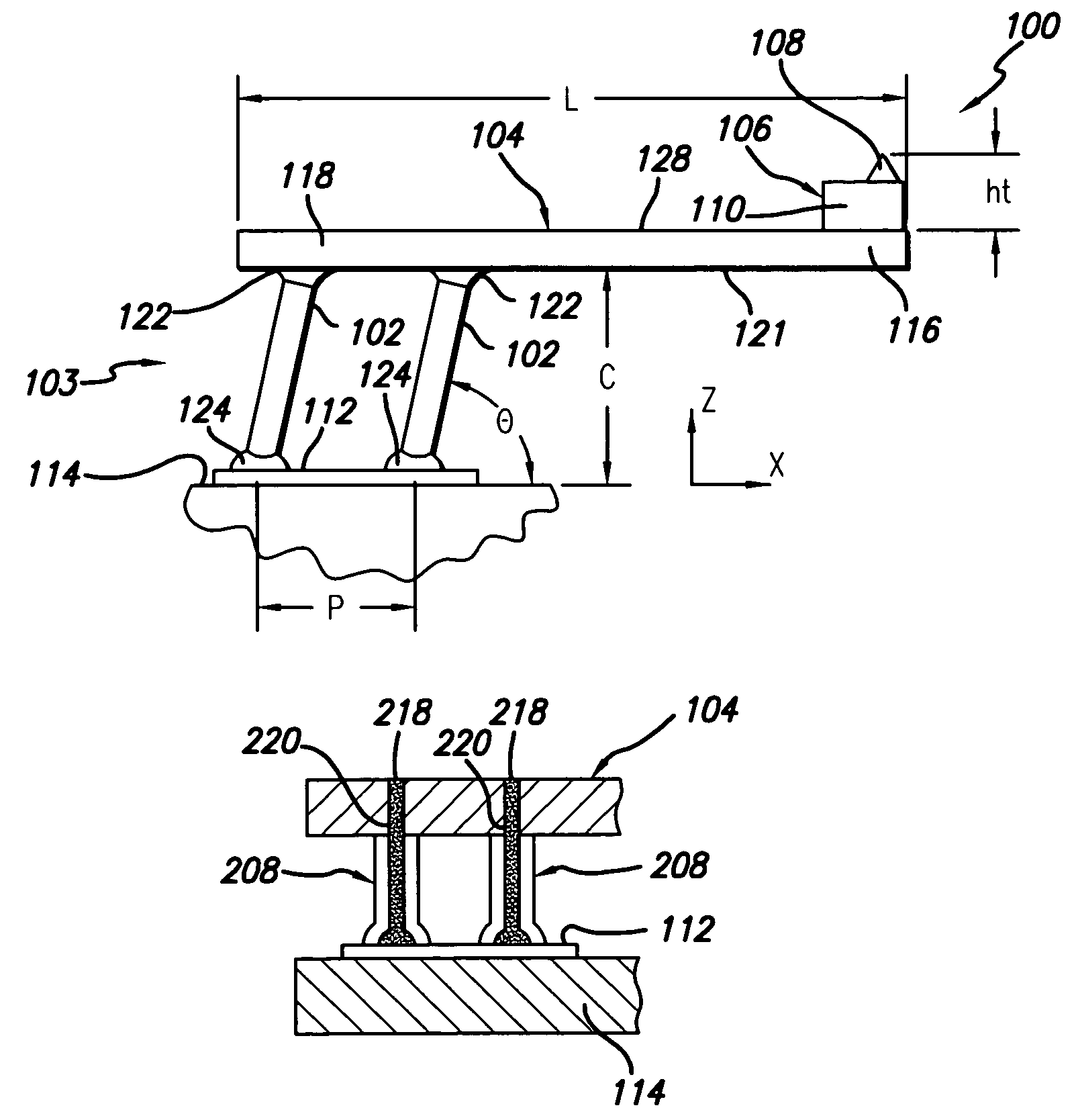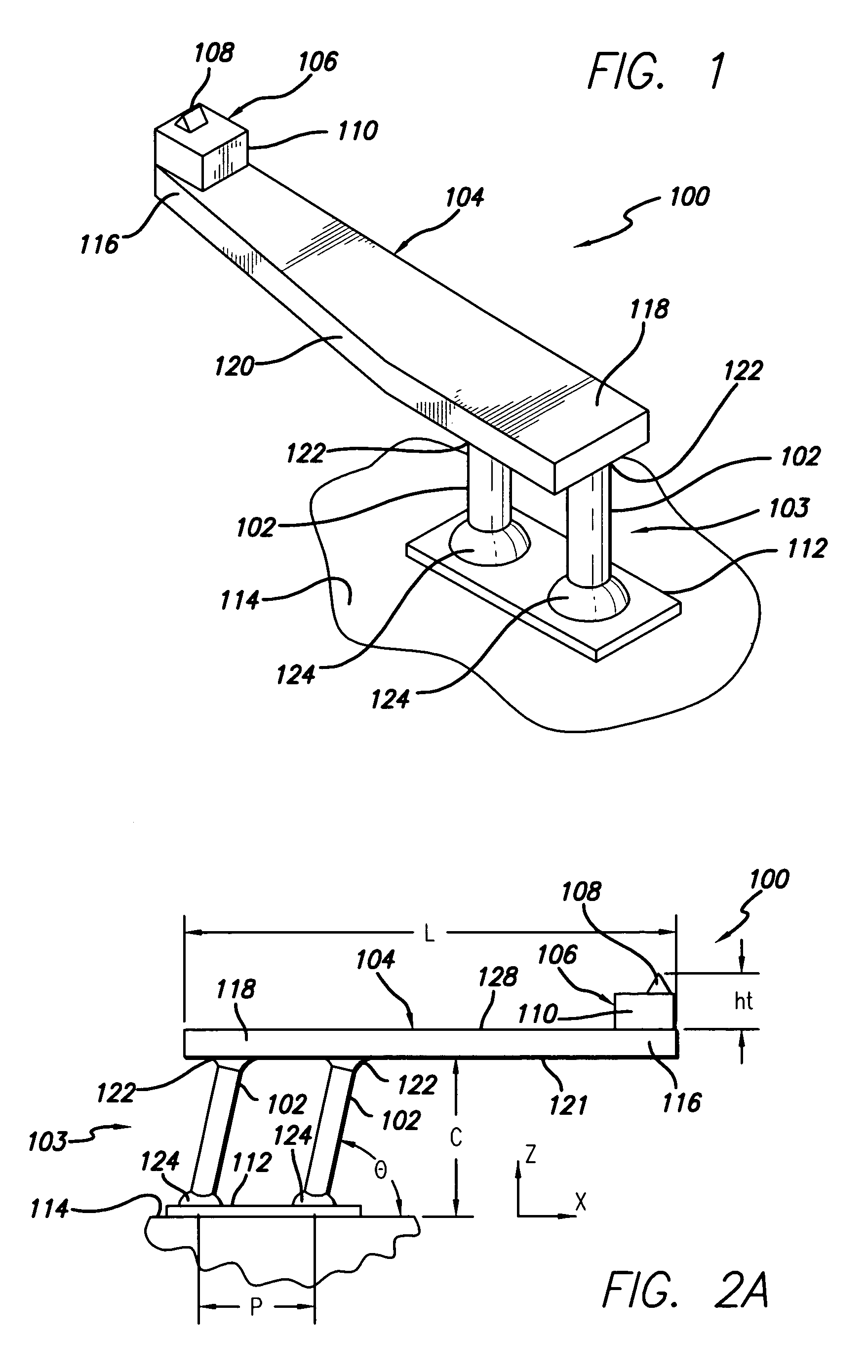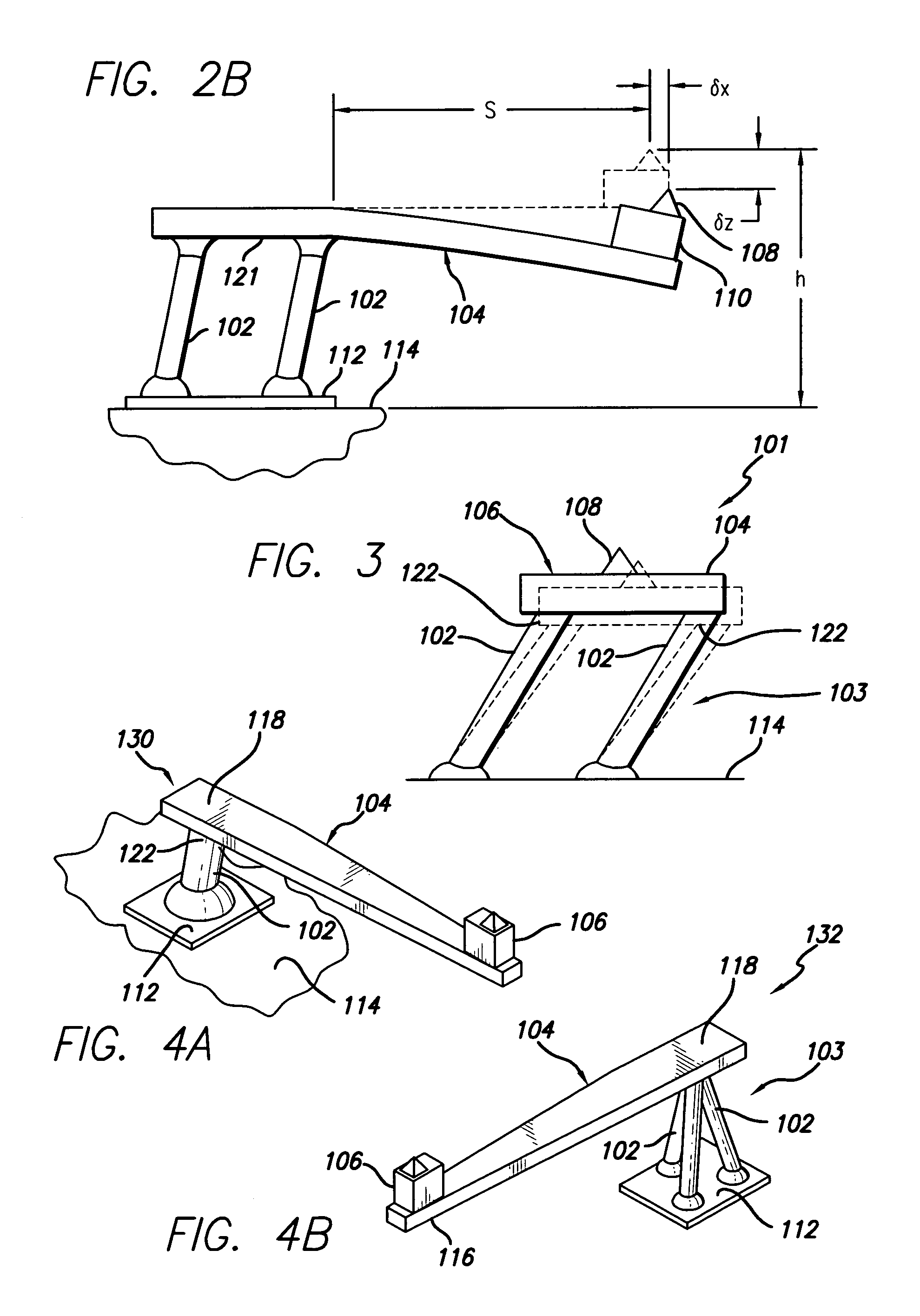Composite microelectronic spring structure and method for making same
a micro-electronic and spring structure technology, applied in the direction of contacts, instruments, and semiconductor/solid-state device details, etc., can solve the problems of not being able becoming increasingly difficult to meet these, and other design requirements, and unable to meet the design requirements described. , to achieve the effect of convenient use, adequate strength and stability, and less time and expens
- Summary
- Abstract
- Description
- Claims
- Application Information
AI Technical Summary
Benefits of technology
Problems solved by technology
Method used
Image
Examples
Embodiment Construction
[0042]The present invention satisfies the need for a microelectronic spring structure, that overcomes the limitations of prior art spring structures. In the detailed description that follows, like element numerals are used to describe like elements illustrated in one or more figures.
[0043]Contact structures according to the present invention are particularly well-suited to making electrical connections to microelectronic devices having contact pads disposed at a fine-pitch, or where a large array of economical microelectronic spring contacts is desired; and particularly where a relatively large z-extension, such as greater than about 130 microns (5 mils), is desired. As used herein, the term “fine-pitch” refers to microelectronic devices that have their contact pads disposed at a spacing of less than about 130 microns (5 mils), such as 65 microns (2.5 mils). However, structures of the present invention may also be used in coarser-pitch applications, if desired. The advantages of the...
PUM
 Login to View More
Login to View More Abstract
Description
Claims
Application Information
 Login to View More
Login to View More - R&D
- Intellectual Property
- Life Sciences
- Materials
- Tech Scout
- Unparalleled Data Quality
- Higher Quality Content
- 60% Fewer Hallucinations
Browse by: Latest US Patents, China's latest patents, Technical Efficacy Thesaurus, Application Domain, Technology Topic, Popular Technical Reports.
© 2025 PatSnap. All rights reserved.Legal|Privacy policy|Modern Slavery Act Transparency Statement|Sitemap|About US| Contact US: help@patsnap.com



